Chimpanzees are one of the closest living relatives to humans. These smart, social animals live in the forests of Africa and are known for their playful nature, strong family bonds, and clever use of tools. Whether climbing trees or solving problems, chimpanzees continue to surprise and inspire people around the world.
Scientific Classification
-
Kingdom: Animalia
-
Phylum: Chordata
-
Class: Mammalia
-
Order: Primates
-
Family: Hominidae
-
Genus: Pan
-
Species: Pan troglodytes
Chimpanzees are great apes, not monkeys, and share about 98–99% of human DNA.
Common Names
-
Chimpanzee
-
Chimp
-
“Enwe” (Igbo)
-
“Eran Igbo” (Yoruba)
-
“Soko” (Swahili)
-
“Gorilla” (sometimes used wrongly by locals to refer to chimps)
Geographic Distribution
Chimpanzees live in Central and West Africa, including:
-
Nigeria
-
Cameroon
-
Gabon
-
Democratic Republic of Congo
-
Uganda and Tanzania
They live in:
-
Tropical rainforests
-
Wooded savannas
-
Riverine forests
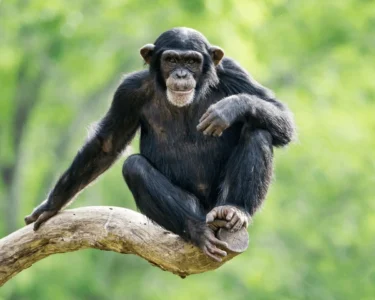
Image Showing a chimpanzee sitting calmly on a tree branch, looking thoughtful (Source: Shutterstock)
Physical Characteristics
Chimpanzees look similar to humans in many ways:
-
Hairy body, mostly black or dark brown
-
Bare face, ears, palms, and soles
-
Long arms for swinging through trees
-
Strong fingers and toes for climbing
-
Facial expressions that show emotion
Size:
-
Height: About 1.2–1.6 meters when standing upright
-
Weight: 30–60 kg
-
Lifespan: 40–50 years (can live longer in captivity)
Behavior and Lifestyle
Chimpanzees live in large, flexible groups called communities.
-
Highly social, they groom, hug, and play with each other
-
Use tools like sticks to catch termites or rocks to crack nuts
-
Communicate with facial expressions, sounds, and gestures
-
Sleep in nests they build in trees every night
-
Move by walking on all fours (knuckle-walking) but can stand upright
They are protective of their families and have a strong memory and learning ability.
What do Chimpanzees eat?
Chimps are omnivores, meaning they eat both plants and meat.
They eat:
-
Fruits and leaves
-
Nuts and seeds
-
Insects like termites
-
Bird eggs and small animals (occasionally)
They spend many hours each day foraging for food, especially in the early morning.
Fun facts
-
Chimpanzees can recognize themselves in a mirror, a sign of self-awareness.
-
They have been seen laughing when tickled or playing.
-
Chimps can learn basic sign language and symbols.
-
Each community has its own “culture”, ways of using tools passed from one generation to another.
-
They use leaves as sponges to drink water from tree holes.
Breeds of Chimpanzee
1. Central Chimpanzee (Pan troglodytes troglodytes)
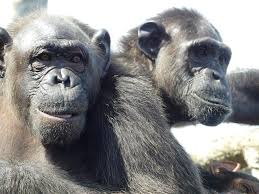
Image Showing Central Chimpanzee (Source: New England Primate Conservancy)
-
Region: Found mainly in Central Africa (Cameroon, Gabon, Equatorial Guinea, Republic of Congo, and parts of Central African Republic).
-
Description:
This is the most numerous subspecies of chimpanzees. They are medium-sized with dark black coats and sometimes pinkish lips. Their body hair is denser compared to some other subspecies, helping them adapt to forest habitats. -
Conservation Status: Endangered due to deforestation and poaching.
-
Unique Features:
-
Larger groups compared to other subspecies.
-
Highly intelligent and known for complex tool use.
-
2. Western Chimpanzee (Pan troglodytes verus)
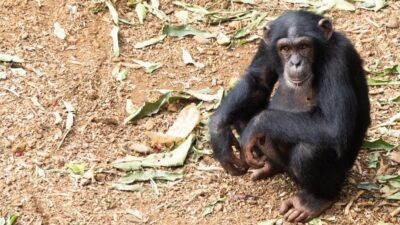
Image Showing Western Chimpanzee (Source: New England Primate Conservancy)
-
Region: West Africa (Guinea, Côte d’Ivoire, Mali, Liberia, Sierra Leone, Senegal).
-
Description:
This subspecies is generally lighter-faced than others and often has pink lips. They have slightly longer arms and lighter body hair. -
Conservation Status: Critically Endangered, populations are shrinking rapidly.
-
Unique Features:
-
The only chimpanzee subspecies known to use wooden spears for hunting.
-
Highly arboreal, spending more time in trees.
-
3. Nigeria-Cameroon Chimpanzee (Pan troglodytes ellioti)
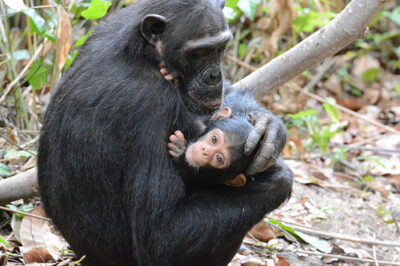
Image Showing Nigeria-Cameroon Chimpanzee (Source: New England Primate Conservancy)
-
Region: Restricted to Nigeria and Cameroon.
-
Description:
This is the rarest and most localized subspecies. It is medium-sized, with a slender build and dark face. They tend to have a more robust jawline compared to the Central subspecies. -
Conservation Status: Endangered, fewer than 10,000 individuals remain.
-
Unique Features:
-
Smallest geographic range of all chimpanzee subspecies.
-
Distinct vocalizations and nesting patterns.
-
4. Eastern Chimpanzee (Pan troglodytes schweinfurthii)
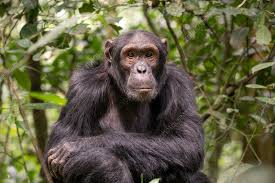
Image Showing Eastern Chimpanzee (Source: New England Primate Conservancy)
-
Region: Eastern Central Africa (Uganda, Rwanda, Burundi, Democratic Republic of Congo, and Tanzania).
-
Description:
They have longer, darker coats and larger bodies compared to other subspecies. Their faces are often darker, and they have a more muscular build. -
Conservation Status: Endangered, but they have one of the largest ranges.
-
Unique Features:
-
Famous for living in Gombe National Park, studied extensively by Jane Goodall.
-
Known for sophisticated hunting strategies and using tools like sticks and leaves.
-
Importance to Humans
Chimpanzees help us understand our own behavior and past.
-
Scientific research has shown how similar they are to us
-
Cultural icons in books, movies, and local tales
-
Used in the past in entertainment and experiments (now banned or reduced)
-
In some cultures, chimps are seen as sacred or wise animals
Their presence in forests also supports forest regeneration, as they spread seeds through their dung.
Health & common issues
Chimpanzees can suffer from many of the same diseases as humans.
Health Risks:
-
Malaria, flu, and cough
-
Wounds from fights or falls
-
Parasites (worms, ticks)
-
Stress and depression in captivity
-
Poaching injuries or trauma
Veterinary Needs (in rescue centers or sanctuaries):
-
Regular checkups and vaccines
-
Enrichment and mental stimulation
-
Healthy diet and exercise
-
Emotional care for orphans or abused individuals
Conservation status
Chimpanzees are listed as Endangered by the IUCN. Less than 300,000 may remain in the wild, and numbers are falling fast.
Major threats:
-
Habitat loss from deforestation and farming
-
Illegal hunting and bush-meat trade
-
Capture for the pet trade
-
Diseases from contact with humans
Conservation efforts:
-
Wildlife laws and protected reserves
-
Sanctuaries for rescued chimps
-
Forest education programs
-
Research and monitoring projects
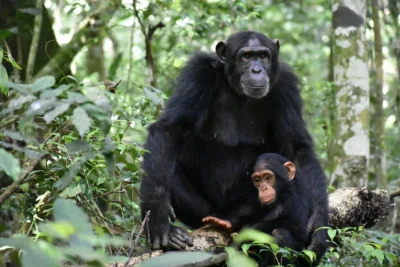
Image showing a young chimpanzee playing while its mother watches nearby (Source: BBC Wildlife Magazine)
Want to support primate rescue or report illegal wildlife handling? Contact Doctor Hulk Veterinary Hospital Today @ 08143397614. We care for animals with brains, beauty, and a heart as big as the jungle.













Reviews
There are no reviews yet.